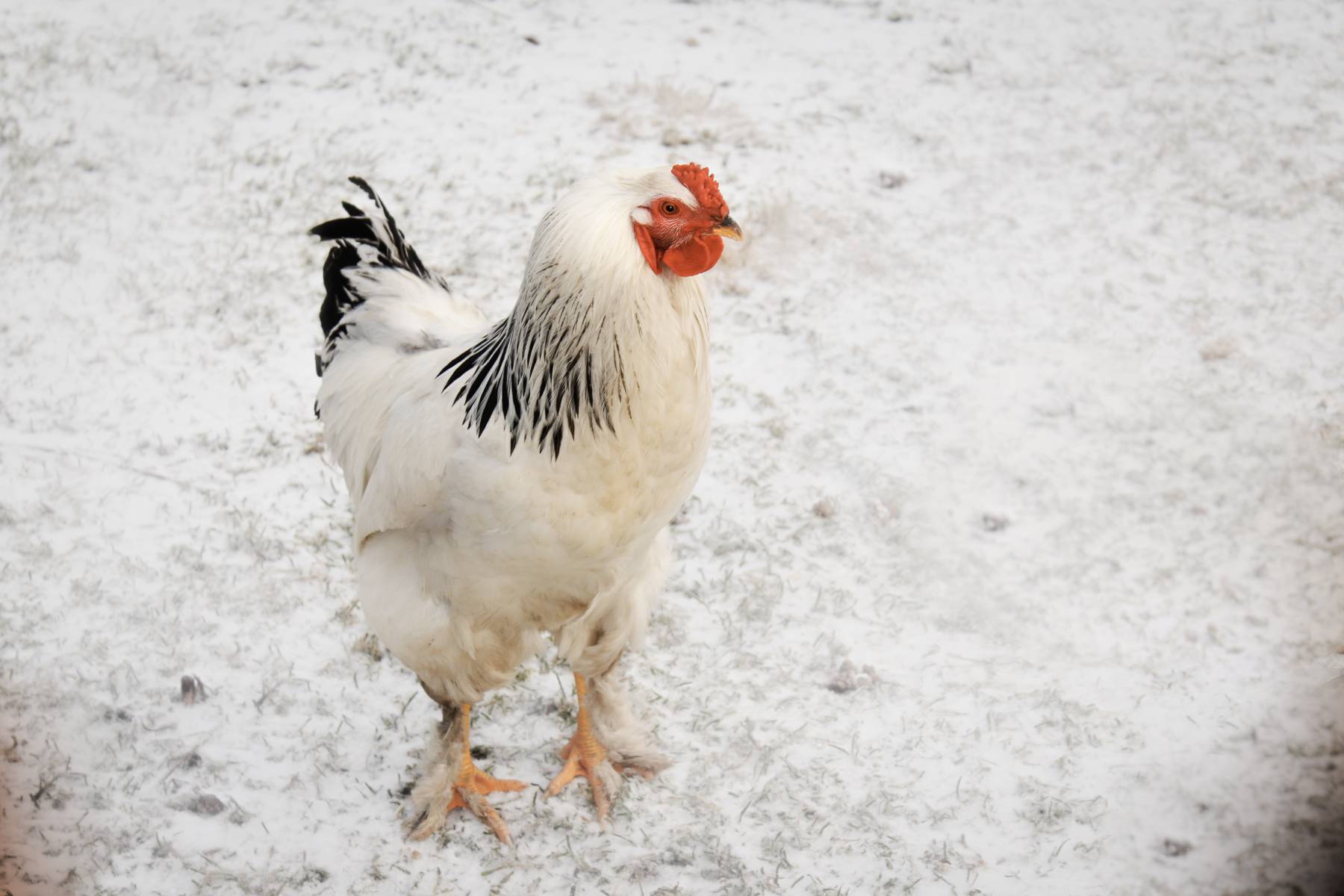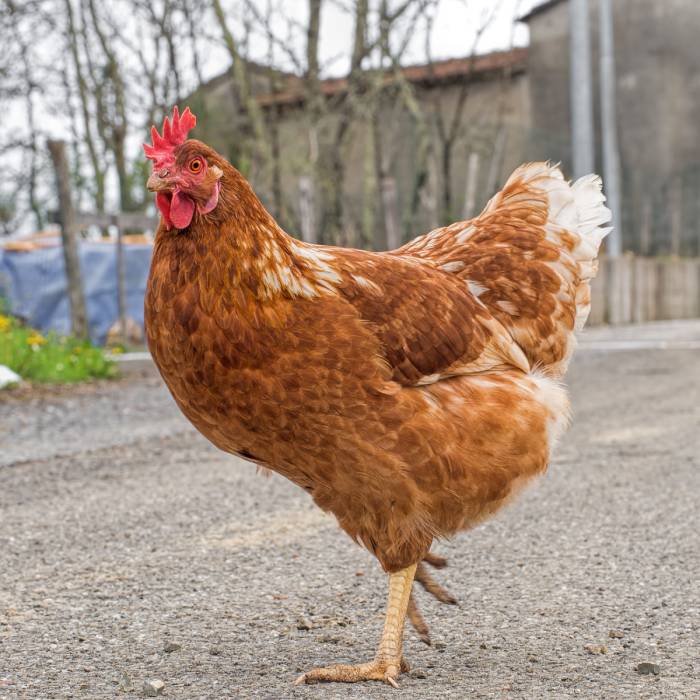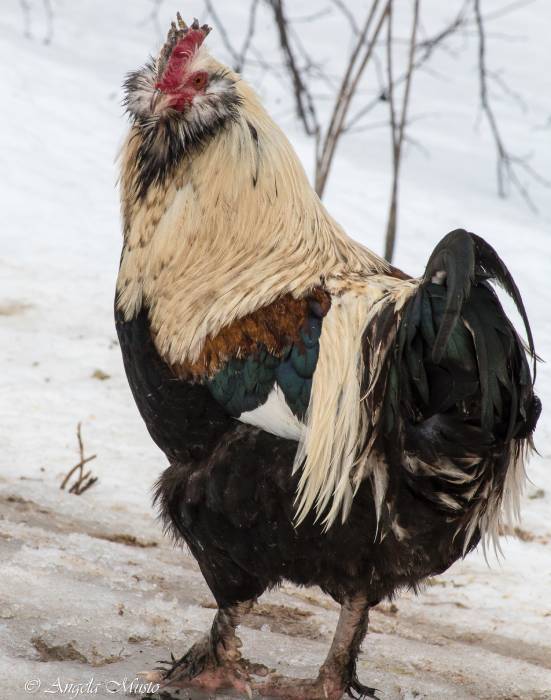
Reading Time: 4 minutes
by Sherri Talbot
The best way to prevent winter mortality is to choose cold-weather chickens bred for your environment.
Living in an area of the world with long, cold, wet winters, it’s common to see new chicken owners reaching out for help as temperatures drop. As the frosts hit, ice forms, and snow falls, there’ll always be the occasional person who realizes too late that they don’t know how to help their birds make it through the coldest days.
Most support will be around housing, bedding, proper ventilation, and keeping the runs clean and dry. However, the best advice for new chicken owners should come before they buy their first chick.
Chicken breeds have been developed for specific climates like any other domesticated animal. The best way to prevent winter mortality is to choose chickens bred for your environment. Learning what characteristics will help birds thrive in cold weather will help you and your birds get through winter more easily.
Comb and Wattle Frostbite
Common places for chickens to develop frostbite are the comb and wattles. Large combs allow chickens to disperse heat in hot weather. In cold weather, the blood vessels close down to allow the birds to retain body heat. This means the comb cools off, making it especially prone to frostbite.

The skin pales, turns gray on the ends, then black, and eventually pieces of the comb die and fall off. Especially in roosters, the longer the comb and the wattles, the greater the chance of frostbite and the more severely it can affect the bird. To protect your chickens, choose a breed with a short comb. Some examples are the pea comb displayed in the Brahma or the rose comb you can see in the Wyandotte.
Warm Feathers
Waterfowl and wild birds survive below freezing temperatures by fluffing their feathers and creating layers in which warm air is trapped. This is why a tropical waterfowl, like the Muscovy duck, can survive in temperatures as low as negative 10 degrees Fahrenheit. Birds with the fluffiest feathers do best in the lowest temperatures. Breeds like the Cochin and the Brahma are some of the most obviously protected due to their heavy feathering. Birds like the Buckeye may seem less shielded but still have some visible insulation.
Don’t rule out breeds entirely based on their appearance, though. Some breeds can stay well insulated, even though they don’t look as heavily feathered as their more famous “floofy” cousins.
The Silkie requires a mention here because, while their unique look makes them an appealing breed, it also makes them unusually bad for cold climates. The fuzzy look of a Silkie is caused by the difference in feather shape and the shape of feathers in the average chicken. They lack the barbs that keep another breed’s feathers neat and smooth, giving them the fluffy appearance many people like. The inability to pull their feathers in makes them unable to insulate themselves the way other chickens can. This becomes even more detrimental if they get wet, since the wet feathers plaster themselves to the body and freeze. Silkies do best in moderate climates but continue to be sold in areas they aren’t bred for.
Legs and Feet
Like the comb and wattles, a chicken’s toes can develop frostbite. Chickens lack the protection of many species for walking through ice and snow. While their scales can protect them to a certain extent, you’ll often see chickens hunkering down or pulling their feet up into their feathers in an attempt to warm them up in bad weather. Choosing breeds that have retained these instincts is important to keeping them safe in cold temperatures.
Selecting chickens with cold-hardy feet will depend on a lot more than the temperature in your location. Faverolles and other feather-legged breeds do very well in cold, dry temperatures. However, the insulating layer of feathers on their legs and feet — if it gets wet or clotted with ice — can actually make it more difficult for the birds to keep their feet warm and frostbite-free.

Breeding
Some breeds were first developed with cold winters in mind. The Chantecler chicken is possibly the best-known in this category. They were bred in Canada to survive long nights and freezing temperatures. Breeders primarily selected for productivity and winter-hardiness.
Chanteclers are additionally well-suited to cold climates because:
- The hens have incredibly small combs, and both males and females have tiny wattles to provide additional protection from frostbite.
- They keep their top feathers close to their body but have a warm layer underneath — almost like the down on a goose.
However, breeders were also selected for the ability to lay with less daylight and for heavy bodies that can withstand the cold. They’re described as “no frills” birds, with their ancestry coming from sturdy stock to produce sturdy birds with no accessories.
Choosing breeds with these cold-resistant traits will decrease the amount of pampering your birds need throughout the winter and increase both their comfort and survival rates. Choosing breeds with proper insulation, without large combs or wattles, and with good behavioral instincts for cold weather will set you on a path to success. Combining these features with a healthy diet, a clean, well-ventilated coop, and sturdy protection from predators will help you and your chickens feel secure through the winter.
Sherri Talbot is the co-owner and operator of Saffron and Honey Homestead in Windsor, Maine. She raises endangered, heritage-breed livestock and hopes someday to make education and writing on conservation breeding her full-time job. Details can be found at SaffronandHoneyHomestead.com or on
Facebook at: www.Facebook.com/SaffronandHoneyHomestead.
Originally published in the October/November 2024 issue of Backyard Poultry and regularly vetted for accuracy.
…
backyardpoultry.iamcountryside.com
Feed Name : Backyard Poultry
Chickens 101,cold hardy chickens,cold-weather-chickens,how-cold-is-too-cold-for-chickens
hashtags : #Choosing #ColdWeather #Chickens #Backyard #Poultry






Leave A Comment